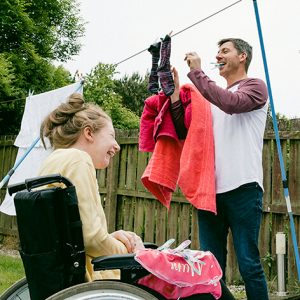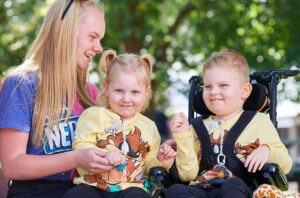
Getting ready for your child’s NDIS Plan Reassessment meeting
Here are six tips from other families of children with disability to help you get ready for your child’s NDIS Plan Reassessment meeting:
1. Preparation
- Don’t leave your preparation to the last minute. A Plan Reassessment can require almost as much supporting evidence as your first Plan. Start gathering documentation a few months before your child’s Plan Reassessment is due.
- Make a list of tasks and documents required. Try not to do too many at once. You’re already busy enough!
2. Record what progress your child has made
- You will be asked how your child is progressing towards their goals.
- Ask for reports from your child’s therapists at least two to three months before the meeting. These should detail progress towards existing goals.
- The reports also need to outline what supports are needed in the next Plan. Recommendations from therapists should include:
– How they relate to your child’s disability
– How they will help achieve your child’s goals
– How they will increase or maintain functional capacity and for social and economic participation
– How they are evidence-based and value for money
- Make sure you read the reports before you share them to ensure they are accurate and easy to understand.
- If you haven’t used all of your child’s allocated funding, be able to explain why. Was it the time it takes to put a Plan into action? Write down what actions you took to organise services.
- Update your child’s Participant Statement.
3. Share any change in circumstances
- Share any changes in your circumstances.
- Has your child had an additional diagnosis? If so, you’ll need to bring a letter with the formal diagnosis from a paediatrician or health professional.
- Has the availability or sustainability of informal supports changed? Has another member of your family recently become an NDIS participant? Do you now have health issues of your own? Ask your GP to confirm these changes in a letter.
- Update your Carer Statement.
4. Think about what is needed in your child’s next Plan
- Think about your child’s progress and whether their goals are still appropriate. Think about three short-term (12 month) goals and one or two long-term goals.
- Think about your child’s age and stage of development. Is your child starting school, reaching puberty, leaving school or turning 18? Do these changes mean your child needs different support?
- What does your child need in terms of therapy or capacity building activities? Think about what your child has achieved and what they are continuing to work towards.
- Does your child need additional or new Assistive Technology (AT)? You will need to provide supporting evidence and quotes. Remember you can request an AT allocation for simple low-risk Assistive Technology.
- Think about what your child needs in terms of Core support.
- Does your child need behaviour support? It’s best to address behaviour concerns early. School reports and therapist reports can provide good evidence.
- You can include funding for parent/carer training in your child’s Plan. Are there any workshops or conferences that relate to your child’s disability you would like to go to?
- Are you happy with the type of Plan management you have? You might want to consider Plan or Self-management. Do you want Support Coordination? The Reassessment is an opportunity to ask for these to be included in your child’s Plan. Make sure you can explain why your request is reasonable and necessary.
- You might want to consider asking for a longer Plan, e.g. two years. You would need to be fairly certain that your child’s condition and support requirements will be stable over this time. When you receive your Plan, make sure the funding has increased to match the extended period.
5. Get ready for the meeting
- If you have a Support Coordinator, you can ask them to assist with planning for the Reassessment meeting. They should write a report on what they have done.
- It’s a good idea to bring someone who has some knowledge of your child and NDIS processes, e.g. a friend with a child with a similar disability or a trusted Support Worker.
- When you get to your meeting, ask for an email address to send all your documents to.
- If it is a face-to-face meeting bring paper copies of all documents to the meeting.
- If you have been assigned a Local Area Coordinator and your child or family has complex issues, e.g. more than one child with disability, it may be best to request an NDIS Planner.
6. What happens next
Your Local Area Coordinator or other NDIS representatives gather information from you at the plan reassessment meeting. They make recommendations but they do not approve the plan. All plans are approved by an NDIS planner. Decisions about plans are made on the basis of Reasonable and Necessary.



